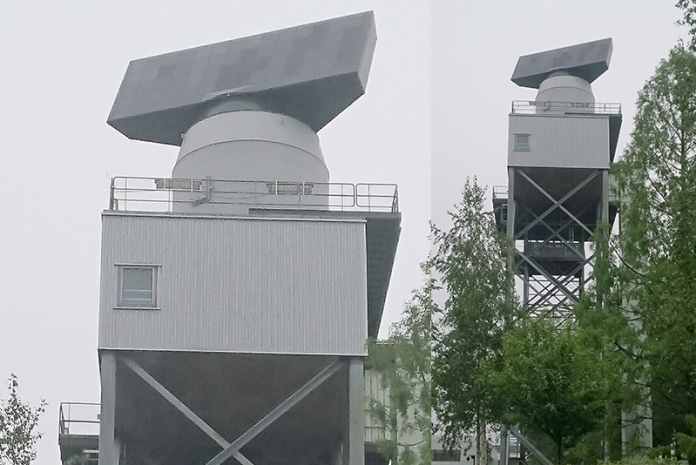
Dr. Thomas Withington – New radars promise a major enhancement to the Royal Netherlands Air Force’s air surveillance.
The Koninklijke Luchtmacht (RNLAF/Royal Netherlands Air Force) will have completed the introduction of its Thales Smart-L L-band (1.215 gigahertz/GHz to 1.4GHz) ground-based air surveillance radars into service by 2021, company officials have disclosed.
Two Smart-Ls are being acquired to replace the RNLAF’s legacy Thomson-CSF ARES MPR S-band (2.3GHz to 2.5GHz/2.7GHz to 3.7GHz) radars. These are now considered obsolete. One of these radars was deployed at Weir in the northern Netherlands with a second deployed at Nieuw Milligen in the centre of the country. These two facilities provide air surveillance over the northern and southern Netherlands respectively. The ARES MPR radar at Nieuw Milligen is not believed to be operational, while the radar installed in Weir is thought to frequently be unserviceable.
Factory acceptance tests for the SMART-L occurred at Thales’ facility in Hengelo, central Netherlands, in late 2018. The final qualification of the radar for the air force is expected to be completed by late 2019/early 2020. The first Smart-L, to be deployed at Weir, will then be declared operational. The second is expected to be declared operational in 2021. The second Smart-L will be deployed at a new facility being constructed near the town of Herwijnen. This is in the west of the Dutch province of Gelderland, where Nieuw Milligen is also located, but takes advantage of comparatively higher ground to give the radar a better field-of-view. The SMART-L variant equipping the air force is almost identical to the naval variant which furnishes the Dutch, German, French, Italian, Republic of Korea and Royal navies. The key difference is that the air force’s radar possess a more sophisticated IFF (Identification Friend or Foe) interrogator mounted atop of the antenna. A smaller IFF antenna is mounted on the rear of the naval version.
The Smart-L has an instrumented range of 220 nautical miles (400 kilometres). This will enable the two Smart-Ls to provide surveillance of 1.4 million square kilometres (558,938 square miles). This not only ensures that all of Dutch airspace is covered by the radars, but also significant swathes of northern European airspace, and the air approaches to the country.












